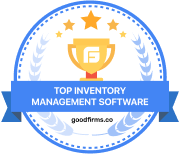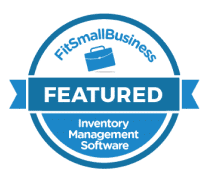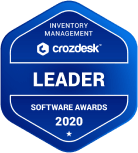Inventory Valuation Methods
(FIFO & LIFO)
Why it is so important to value our inventory, different methods for inventory valuation, and how you should choose your
inventory valuation method based on your business? Answers to all.
- Inventory Management Basics
- What are the basic functions of inventory?
- Types of Inventory
- What is Inventory Management?
- Inventory / Product Tracking
- Why is Inventory Management important?
- Methods of Inventory Management
- Perpetual Inventory Management
- Periodic Inventory Management
- ABC Analysis
- Just In Time Inventory
- FIFO & LIFO
- Economic Order Quantity (EOQ) Formula
- Vendor Managed Inventory
- Two Bin Inventory Control
- Inventory Cycle Count
- FSN Inventory
- Popular Processes of Managing Inventory
- Challenges in Inventory Management
- Best Practices for Inventory Management
- Maintaining Safety Stock
- Demand Forecasting and Planning
- Merchandise Planning
- Retail Visual Merchandising
- Inventory Turnover Ratio
- Stock Replenishment
- Product Bundling
- Important Inventory Management Terms
- Cost of Goods Sold
- Bullwhip Effect
- Reorder Point
- ABC / Pareto Analysis
- Lead Time
- Big Data
- Bundling and Kitting
- Last-In-First-Out (LIFO)
- Current Demand Inventory
- Demand Override
- Days of Inventory on Hand
- Black Box Forecasting
- Backflush
- Inventory Shrinkage
- Moving Average
- Economic Order Quantity
- Kanban
- Cycle Count
- Consignment Inventory
Introduction
In the retail business, your goal is not only to generate revenue and profit but also to keep track of and manage your inventory. We all know how to import inventory management and what’s its contribution towards healthy and optimum business operations. In this blog, we will learn all about inventory valuation and accounting principles. Why it is so important to value our inventory, different methods for inventory valuation, and how you should choose your inventory valuation method based on your business.
What is Inventory, and how is it valued?
Generally speaking, Inventory is the company’s goods that can be classified under three stages of production:
- Products that are raw materials
- Items that are in production
- Goods are ready for sale
Inventory accounting assigns values to the company’s inventory and classifies them as the company’s assets. Assets are inventory that can be turned into cash in the near future. In order to accurately value your company, all your company’s assets need to be assessed.
Is Inventory Tracking a must?
There are two methods of determining income and expenses for accounting purposes: Cash accounting and Accrual accounting.
For medium to large-scale retail businesses out there own some inventory or the other. If you own inventory, then the IRS(Internal Revenue Service) requires you to use the accrual method of accounting.
In accrual accounting, the transaction is recorded when it is earned by sending out an invoice or receiving a bill. That’s why it is essential to track your inventory in every phase of the business cycle.
The new Tax Cuts and Jobs Act states that “if your business has gross receipts of less than $25 million, you can treat your inventory as “non-incidental material and supplies.” In layman’s terms, what it means is that the items in your inventory need not be valued and considered as assets of the company as they are bought for resale. In this case, you can use the cash method of accounting.
Inventory Valuation Method
At the beginning and end of the fiscal year, inventory valuation is a must. For valuation purposes, you must use:
- Generally Accepted Accounting Standards guidelines
- Must clearly reflect your income
- Must maintain consistency from year to year
Since inventory is in constant to and fro motion within the company, it’s challenging to track all the costs of individual items. So, GAAP or Generally Accepted Accounting Standards allow businesses to use some guidelines in properly evaluating their inventory.
Different Methods of Inventory Valuation
A company can choose from various methods to determine its inventory costs suggested by GAAP. In this U.S. Generally Accepted Accounting Principles, also known as GAAP, refer to a standard set of accounting principles that have been issued by the Financial Accounting Standards Board(FASB). GAAP allows businesses to use one of the different inventory accounting methods such as, first in first out (FIFO) and last in first out (LIFO).
FIFO
FIFO, the acronym stands for First-In-First-Out. It is an inventory accounting method where the oldest stock or the inventory that entered the warehouse first is recorded as sold first. So, if you sell a product, the cost of goods sold by using the FIFO method is the value of the oldest inventory. FIFO is one of the most popularly used inventory valuation methods.
Using the Fifo method has some significant advantages as follows:
- It is more realistic because most businesses ship older stock first to avoid depreciation of value or spoilage.
- FIFO increases the value of your purchasing inventory as well as net worth in times of inflation. As a result, you get a higher asset value.
- Your operational reports are always accurate. As you are selling the first bought item first, your balance sheet will always show the actual cost price of the inventory.
LIFO
LIFO, the acronym stands for Last-In-First-Out. It is an inventory accounting method where goods produced or purchased most recently are recorded as sold first. The cost of the newest products is the first to be accounted for as the cost of goods sold (COGS), whereas the lower prices of older goods are counted in inventory. A lot of accountants in the US often advise using the LIFO method for your inventory accounting when you have stock with frequently changing costs. Using LIFO as a preferred method for such scenarios helps with the matching of the latest costs of inventory with the sales revenue of the current period. This can be a more straightforward approach for initial inventory valuation as well as for tax filing purposes. Unlike FIFO, LIFO has some disadvantages while using it as follows:
- LIFO brings taxable income down when your cost price rises, but your profit will turn out significantly lower.
- If in the near future, you plan to expand your business, not all countries allow a LIFO valuation.
Example of FIFO
Let’s understand how FIFO is used to calculate Cost of Goods Sold (COGS) using a rudimentary example
| EVENT | FIFO |
| Buys an Item | $100 |
| Buys the same item after inflation | $150 |
| Sells an item for $175 | -$100 |
| Reported profit | $75 |
In the FIFO method, when calculating profit, its initial/oldest purchasing cost is subtracted from its selling price to calculate the reported profit.
Example of LIFO
The same example used earlier can be used to show the LIFO method for calculating the cost of goods sold (COGS)
| EVENT | LIFO |
| Buys an Item | >$100 |
| Buys the same item after inflation | $150 |
| Sells an item for $175 | -$150 |
| Reported profit | $25 |
In the LIFO method, when calculating profit, is most recent purchasing cost is subtracted from its selling price to calculate the reported profit. As you can see, using the LIFO method for inventory valuation and accounting lowers your return profit.
Difference Between FIFO and LIFO
FIFO or LIFO are the methods that companies use to assess their inventory and calculate profit. The amount of profit a company generates affects its income taxes.
The difference between FIFO and LIFO is showcased below.
| Comparison Parameter |
FIFO |
LIFO |
| Meaning | The first in first out or the FIFO method assumes that the oldest products in a company’s inventory have been sold first. | The last in first out or the LIFO method assumes that the last item of inventory purchased is the first one sold. |
| Restrictions | No restrictions by GAAP or IFRS | IFRS restricts the LIFO method |
| Recording Keeping | In the FIFO method, the number of record-keeping decreases | In the LIFO method, the number of record-keeping increases |
| Impact of Inflation | Decreases the COGS and increases the net profit | Increases the COGS and decreases the net profit |
| Preference | Higher | Lower |
Which method is better?
From what we have understood so far, we can say that the higher the cost inventory lower is the tax while the lower the cost of inventory turns out to be the higher tax.
To know which method is best suited for your business, you need to look at the way your inventory costs are changing.
- If your inventory cost is increasing or is likely to increase in the near future, LIFO can be better. Because the cost of goods is higher, you will benefit from the lower taxes.
- If you feel that inventory cost could be decreasing in the near future, FIFO is the best option.
- If your preference is to accurately assess your inventory cost, FIFO is the better option. It is so because FIFO operates on the assumption that the older and less costly items are usually sold first.
GAAP / IFRS regulations for FIFO and LIFO
Generally Accepted Accounting Principles, also known as GAAP, is responsible for setting up standards for accounting procedures in the United States. Under GAAP, both FIFO and LIFO are legal.
However, the point to be noted is that the International Accounting Standards Body (IFRS) has not permitted the LIFO method.
Outside of the US, most other countries follow the rules laid down by the IFRS(International Financial Reporting Standards) Foundation. This is the reason why most US-based companies use the LIFO method for financial statements and switch to the FIFO method for their overseas operations.
If you ever decide that it would be ideal for your business to switch from the LIFO method to the FIFO method, you need to file FORM 970 with the IRS(Internal Revenue Service). You are allowed to go back to FIFO only if the IRS gives specific permission.
Conclusion
This blog was written in an attempt to answer all the demanding questions regarding FIFO and LIFO methods of Inventory Valuation and Accounting.
In a nutshell, we have learned about Inventory Valuation and its importance for business. The reason being, it is the way by which you can accurately determine the total value of all your assets and liabilities. While we have seen both FIFO and LIFO methods of inventory valuation, one thing is clear. No method is a foolproof solution for your business. Both methods have their pros and cons. As such, one should choose the method according to their own business. If you are a firm that wants to deal with international operations, FIFO is the best method as outside the USA; not many countries support the LIFO method.








